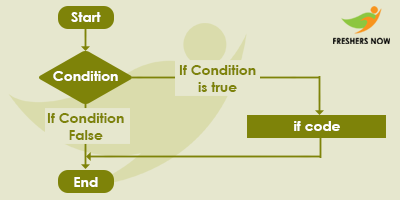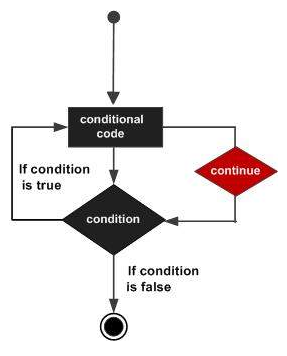Python Statements: A statement is a command that the programmers give to the compiler. There is a different type of statements in python. They are as follows: Python If Else, Elif, Else, Short Hand If, Short Hand If Else, And, Or, Break Statement, Continue statement.
Python Statements

Python If else Statement
In python statements, If Statement is used for decision making. It will run the body of code only when IF statement is true. When you want to justify one condition while the other condition is not true, then you use “if statement”
Syntax:
if expression: statement
else: statement

Example
num = 4
if num >= 0:
print("Positive or Zero")
else:
print ("Negative number")
Output: Positive or Zero
Python Elif Statement
It is used in python and used if the previous conditions were not true, then try this condition.
Syntax:
if expression1: statement
elif
expression2: statement
elif
expression3: statement
else: statement
FlowChart

Example
a = 55
b = 55
if b > a:
print("b is greater than a")
elif a == b:
print("a and b are equal")
Output: a and b are equal
Python Else Statement
Python else statement is an optional statement that is normally used in an “if-else” or “if-else” construction.
Example
a = 200
b = 33
if b > a:
print("b is greater than a")
elif a == b:
print("a and b are equal")
else: print ("a is greater than b")
Output: a is greater than b
Python Short Hand If Statement
If you are having only one statement to execute, you can put it on the same line as the if statement.
Example
if a > b:print("a is greater than b")
Output: “a is greater than b”
Python Short Hand If …Else Statement
If you are having only one statement to execute, one for if, and one for else, you can put it all on the same line:
Example
print("A")
if a > b
else print("B")
Output: B
If you want, we can have multiple else statements on the same line.
Example
print("A") if a > b else print ("=") if a == b else print("B")
Python And Statement
It is a logical operator and is used to combine conditional statements.
Example
if a > b and c > a:
print("Both conditions are True")
Output: Both conditions are true.
Python Or Statement
It is used for combining conditional statements.
Example
if a > b or a > c:
print ("At least one of the conditions is True")
Python Break Statement
You can stop the loop, even if while the condition is true. The most common use for the break is when some external condition is triggered requiring a hasty exit from a loop. The break statement can be used in both while and for loops.
If you are using nested loops, the break statement stops the execution of the innermost loop and start executing the next line of code after the block.
Syntax: break;
Flowchart

Example
i = 1 while i < 6: print(i) if i == 3: breaki += 1
Output
1
2
3
Python Continue statement
It returns the control to the beginning of the while loop. The continue statement rejects all the remaining statements in the current iteration of the loop and moves the control back to the top of the loop. The continue statement can be used in both while and for loops.
Syntax: continue
FlowChart

Example
#!/usr/bin/python
for letter in 'Python':#First Example
if letter == 'h':
continue
print 'Current Letter :', letter
var = 10 #Second Example
while var > 0:
var = var -1
if var == 5:
continue
print 'Current variable value :', var
print "Good bye!"
Output
Current Letter : P
Current Letter : y
Current Letter : t
Current Letter : o
Current Letter : n
Current variable value : 9
Current variable value : 8
Current variable value : 7
Current variable value : 6
Current variable value : 4
Current variable value : 3
Current variable value : 2
Current variable value : 1
Current variable value : 0
Good bye!
